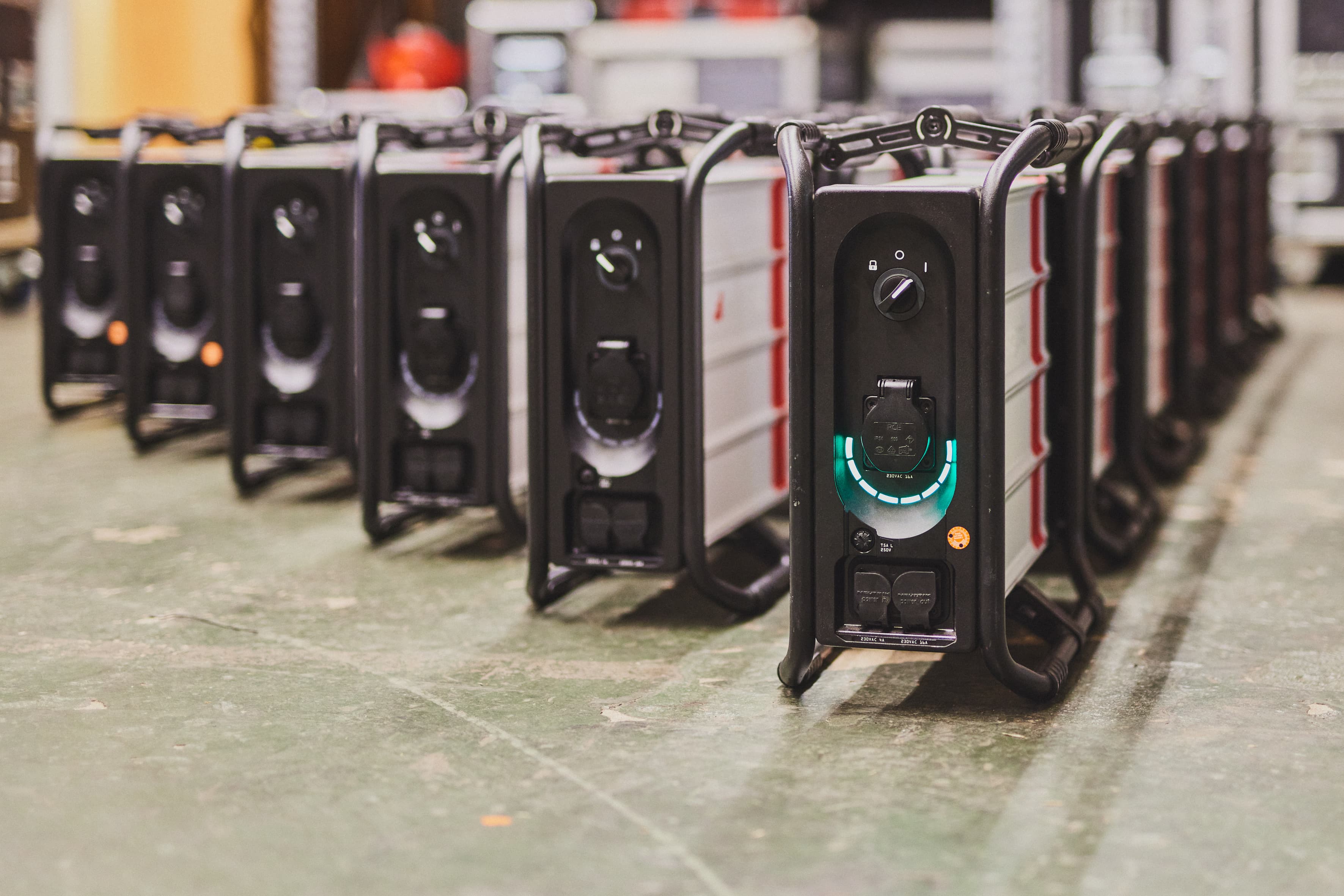The world needs rapidly scalable solutions to address the climate crisis as we continue to experience historically high temperatures year on year. At the same time, a striking number of cities across the globe are struggling to ensure healthy air quality for inhabitants every day. Governments are pushing for more action: the European Union recently sealed the deal on its 2030 climate pact and is seeking stricter air quality standards by 2030 as part of the Green Deal package.
As nations and cities pursue climate neutrality and zero air pollution, a major source of emissions remains largely neglected. For about 2 billion people, work is mobile. Fuel-driven combustion generators are the main power source for this off-grid work that takes place in sectors like construction, live events, film, media and emergency response. These small engines are harmful to both users and people in surrounding environments by emitting considerable greenhouse gas emissions, high concentrations of exhaust gas and excessive noise. The decades-old technology is also very inefficient in turning fuel into electricity.
Instagrid co-founder Dr. Sebastian Berning calls for a change:
“There’s a pressing need to tackle the overlooked environmental problems associated with combustion generators. We want to make clean electricity the new standard for portable power. The climate crisis is clear, and we need solutions that make an impact now (!), not only in ten years. Our distinctive technology is already providing professionals access to clean energy across Europe and we’re building on it to also offer large-scale batteries to replace diesel generators up to the Megawatt scale worldwide.”

Instagrid portable batteries: silent off-grid electricity with no direct emissions
Instagrid has collected data during field studies to make fact-based comparisons on how portable battery systems outperform conventional combustion engines in terms of sustainability. These results have now been compiled in the company’s first Impact Report 2022 which outlines key figures on the company’s impact on the environment, circularity and people.
”Our customers are leading the way towards net-zero by choosing more advanced and sustainable alternatives to power their off-grid work. We want to go the extra mile in sustainability to further empower our customers and offer them tools – backed by strong and credible data – that support their sustainability goals while making their job more efficient and productive. Together we can help speed up the clean energy transition and protect urban air quality and the wellbeing of people,” co-Founder Andreas Sedlmayr continues.
In 2022, Instagrid already provided 22 000 professionals with access to clean energy in 2022. Instagrid is currently expanding into new markets globally and building on its distinctive technology to offer a range of large-scale mobile battery systems that will transform how clean power is managed on entire construction sites, event productions, film sets and alike. With its mobile battery systems, Instagrid is building the infrastructure to provide access to decentralized, clean electricity globally so that inflexible and expensive power grids can be leapfrogged in many regions just as mobile phones leapfrogged telephone land lines decades ago. To support this quantitatively, the company has set itself the goal of providing at least 10 TWh of clean energy to people worldwide by 2030.
Read about Instagrid’s impact strategy, roadmap and numbers for 2022 here.
Highlights from Instagrid’s first Impact Report 2022:
The Instagrid ONE max
has up to 97% lower total greenhouse gas emissions compared to combustion generators over the product lifecycle.
emits 0 local emissions and 0 noise pollution
is 91% recyclable as proven by an external dismantling and recycling study
In 2022, Instagrid
delivered 1.9 GWh of clean energy, comparable to ~1300 people’s annual electricity consumption in Germany
helped customers save 21 000 tons of CO₂e, comparable to powering ~ 6 wind turbines for a year
helped customers save 10 tons of NOx emissions, comparable to taking ~14 000 cars off the street.
